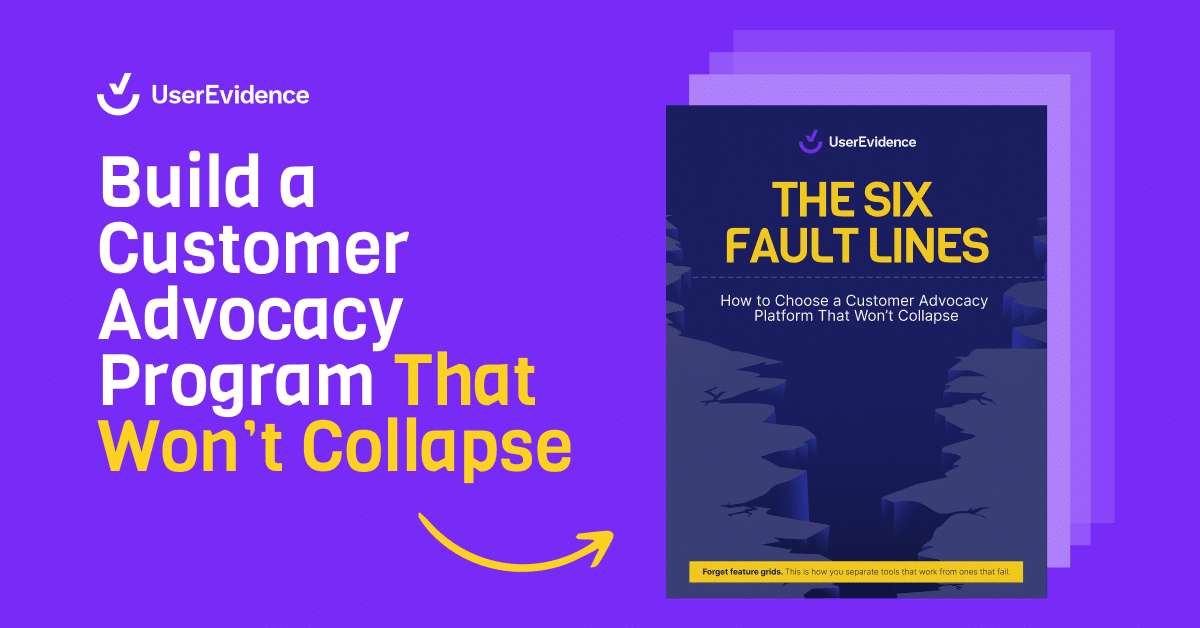When planning your marketing and sales strategies, you’re focused on one thing: ROI. Any new processes or tactics need to deliver tangible results, boosting your overall revenue and brand awareness. Social proof accomplishes this beautifully. In fact, 89% of marketers say ROI from influencer marketing is comparable to or better than other marketing channels. Influencer marketing relies on the types of peer reviews and word-of-mouth marketing that make up social proof. Essentially, social proof creates online peer pressure that motivates your buyers to make a purchase. But how do you determine the ROI of social proof? How do you know which forms of social proof are most influential for your target audience?
To fully understand the ROI of social proof for your business, you need to monitor 6 key metrics to help you gain a better picture of just how lucrative your social proof is. In this article, we’re dissecting 3 marketing metrics and 3 sales metrics you can use to determine the ROI of social proof in your sales and marketing efforts. Check it out!
Marketing metrics to calculate the ROI of social proof
Marketing metrics show your business’s ROI of social proof by indicating how well your social proof points are pulling in new leads, converting them, and increasing your brand awareness. By monitoring and tracking these metrics, you can discover how well social proof fits into your marketing strategies and ensure you’re getting the most out of your customer marketing efforts. Take a look at the 3 marketing metrics below to calculate the ROI of social proof.
Conversion rates
Simply put, your conversion rate communicates what percentage of your website visitors are providing additional contact information, downloading available resources, and essentially indicating additional interest in your product. Including social proof points on your landing pages can vastly increase your conversion rates — including testimonials can increase conversions on sales pages by as much as 34%. Comparing your conversion rates before and after adding social proof to landing pages demonstrates the precise ROI of those proof points. You can find your conversion rate with the following formula:
Conversion Rate = (Conversions ÷ Total Visitors) × 100
So, if your website has 15,768 visitors one month, and 2,377 of those visitors click on your call-to-action (CTA) and convert, your conversion rate would be 15.07%. Luckily, most marketing technologies track conversion rates for you — no math needed! By properly setting up your tracking, your marketing tech stack (for instance, Google Analytics or HubSpot) will automatically track your conversion rate.
Site traffic
Site traffic refers to the volume of visitors your site receives in a given time period. When websites that include testimonials receive 45% more traffic than websites with no testimonials, adding social proof to your site can greatly improve your site traffic over time. You can measure site traffic daily, weekly, monthly, quarterly — the time frame can vary widely, and by measuring multiple time frames, you’re able to view your site traffic growth. Growth indicates that more and more potential customers are aware of your brand as your marketing reaches them. You calculate site traffic growth by:
Monthly Growth Rate = [(Number of New Users from Current Month – Number of New Users from Previous Month) ÷ Number of New Users from Previous Month] × 100
This formula shows how to calculate site traffic growth over the course of a month, but the same formula can be used to measure growth over different time periods, as well. By using this formula, you’re able to see just how much social proof impacts your site traffic. For example, you decide to make a few simple changes to existing landing pages by adding social proof points. You add in logos of some of your largest clients, along with quotes from customers describing their positive experiences. By tracking the amount of site traffic these pages experience, you’re able to determine how much of an impact social proof had on your growth rate.
Customer acquisition cost
It’s no secret that you need to spend money in order to make money. It’s cliche for a reason — without a marketing budget, you’ll have a hard time pulling in new customers. The goal, however, is to limit your customer acquisition cost (CAC) , or how much you spend on marketing per new customer. By adding in social proof, you can start lowering this amount. Social proof is a one-time investment — once added to a landing page, social proof begins working. You can determine your CAC by:
Customer Acquisition Cost = (Sales + Marketing Expenses) ÷ Number of of New Customers Acquired
The amount of money spent per new customer lets you know how effective your marketing efforts are. Obviously, your CAC needs to be lower than your revenue from new customers in order to generate a profit. By tracking your CAC before and after adding social proof to your landing pages, you’re able to see the ROI of social proof directly communicated in your CAC.
Determine the ROI of social proof with these sales metrics
Sales metrics inform your ROI of social proof within your sales function. Routinely measuring these metrics lets you know whether your marketing team uses social proof properly to pull in the best fit leads, how well your sales team communicates those social proof points to buyers, and how those points push your buyers to make an informed purchasing decision. To determine the ROI of social proof within your sales function, you need to monitor the following metrics:
Win rate
By calculating the percentage of deals won, you know how often your leads convert to customers. This can help you determine how many leads sales reps should reach out to in order to hit their target quotas, and informs how efficiently your sales processes mobilize leads to a purchase. You can determine win rate by:
Win Rate = Number of of Closed Deals ÷ Total Number of Deals in the Pipeline
You can use this metric to calculate the win rate of both individual sales reps and the entire sales team as a whole. For instance, to determine how well social proof is working, you can calculate the win rates of deals that used collateral featuring social proof versus those that did without. Was the win rate higher when social proof was leveraged in the sales strategy? With this metric, you’re able to see the direct impact social proof has on revenue.
Revenue gained
Calculating revenue gains simply means you’re determining how much revenue your business has generated over a certain period of time. When it comes to determining the ROI of social proof, tracking revenue gained before and after implementing social proof into your collateral can indicate how much impact your social proof has on your top line. This can be calculated by:
Revenue Gained = Number of Units Sold × Average Price
Tracking your revenue gains is a great way to ensure your sales strategies and social proof points are working as intended.
Buyer engagement
Throughout the sales process, buyer engagement is of the utmost importance. Buyer engagement simply means that as your reps communicate with buyers, the buyers are paying attention to, interacting with, and excited about the content sales reps share. Buyer engagement is calculated through:
Engagement Rate = Interaction Level ÷ Content Shared
This metric sounds confusing, but it’s simple. How much content do your reps share with your buyers, and how often do they interact with that content? In order to calculate this, you’ll need a sales enablement platform that allows your reps to see what content buyers interact with most. Then, based on this information, you can continue tailoring your sales collateral based on buyer engagement. With this in mind, you can A/B test your content with social proof. In a single piece of collateral, you can change the placement of social proof — such as moving quotes from the center of the page to the top — and compare engagement in both locations against one another. This lets you know which performs better and should be used routinely.
Final thoughts
Incorporating social proof into your marketing and sales content allows you to communicate your product’s value through the experiences and positive reviews of current customers. Determining the ROI of social proof for your business can help you understand just how much of an impact social proof has on your buyers. With a few simple metrics, you can gain a robust understanding of the ROI of social proof in your sales and marketing strategies.
Start capturing social proof points for your sales and marketing strategies with UserEvidence and book your demo today.



